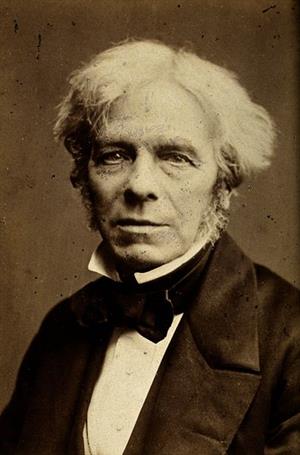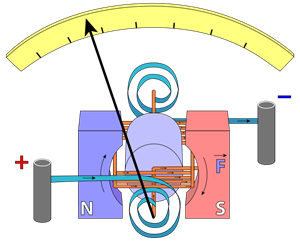
PUMPA - SMART LEARNING
எங்கள் ஆசிரியர்களுடன் 1-ஆன்-1 ஆலோசனை நேரத்தைப் பெறுங்கள். டாப்பர் ஆவதற்கு நாங்கள் பயிற்சி அளிப்போம்
Book Free DemoMichael Faraday (1791–1867):
Michael Faraday was an experimental physicist. He had no formal education. In his early years, he worked in a book-binding shop. He used to read books that came for binding. This way, Faraday developed his interest in science. He got an opportunity to listen to some public lectures by Humphrey Davy of the Royal Institute. He made careful notes of Davy’s lectures and sent them to Davy. Shortly he was made an assistant in Davy’s laboratory at the Royal Institute.

Michael Faraday
Faraday made several path-breaking findings that include electromagnetic induction and the laws of electrolysis. Several universities conferred on him honorary degrees, but he turned down such honours. Faraday loved his science work more than any honour.
Galvanometer:
A galvanometer is an instrument used to detect and measure the current in an electric circuit.

Schematic diagram of galvanometer
A galvanometer has a needle attached to a coil mounted to rotate freely within a magnetic field created by the poles of one or more permanent magnets. When the current is allowed to pass through the coil, the magnetic field generated by the current-carrying wire interacts with the field of the permanent magnets (travelling from north to south poles), generating a twisting force known as torque that rotates the coil, a response explained by the left-hand rule. The deflection of the galvanometer’s needle is proportional to the current flowing through the coil.
The pointer stays at zero (the midpoint of the scale) for zero current flowing through it. Based on the current direction, the pointer can deflect either to the left or to the right of the zero mark.
Reference:
https://commons.wikimedia.org/wiki/File:Michael_Faraday._Photograph_by_John_Watkins._Wellcome_V0026346.jpg
https://commons.wikimedia.org/wiki/File:Galvanometer_scheme.svg